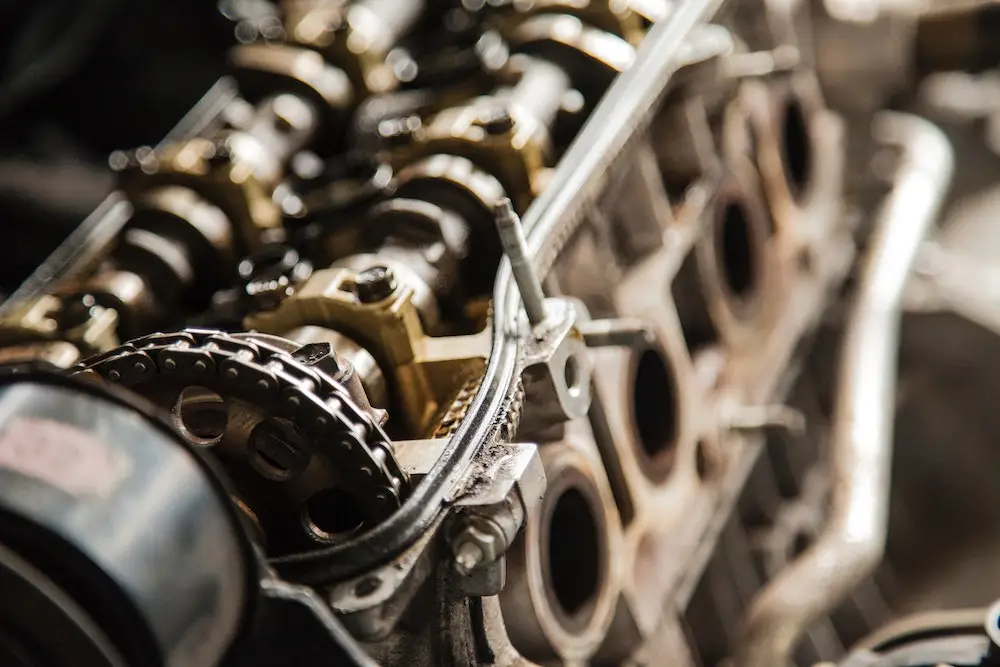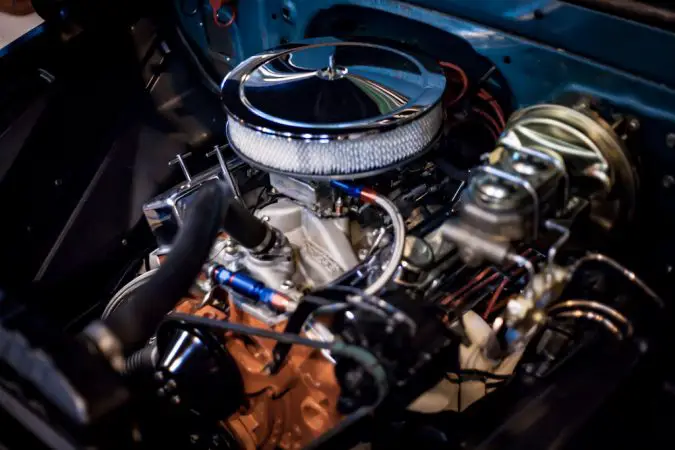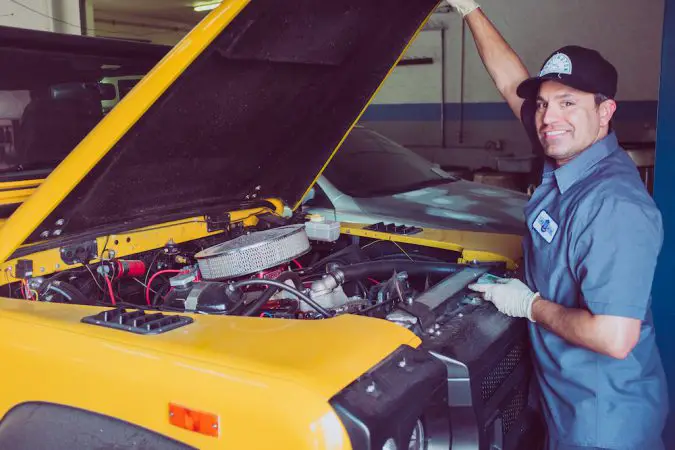Have you experienced something like black smoke coming out of the exhaust? If this is the case, then you probably are experiencing one of the symptoms of bad valve seals. But what are valve seals? You shouldn’t worry because in this article we are going to elaborate on everything you need when it comes to understanding valve seals and the problems they can make.
Getting into mechanicals can be a bit difficult for you if you don’t have that background. But everything is doable and you can learn how these things work. Learning how the components inside of the engine work, is a relatively good thing.
Knowing how the components communicate between them is a good first step into understanding how to troubleshoot. Every component when it fails has a specific symptom that often occurs along the way. Similarly in this case wit the symptoms of bad valve seals. If you don’t learn them, you will never be able to tell that your valves are leaking and what is your next step in overcoming this issue. But we are here to help you out.
In this article, w are going to learn first what are valve seals and what is their role inside of the engine. Then we are going to cover all of the symptoms of bad valve seals and see what symptoms are overlapping with the symptoms that you experience. Then we will cover how you can solve this problem as well as the cost to solve this problem. So, if you want to learn more, follow along.
What Are Valve Seals?
The valve seals are small rubberized rings that are installed on the intake and exhaust valves. They have a special role to play in the work of the engine.
Their main role is to make sure that the valves and the not leaking. Because as you know, oil is pumped through the oil pump and goes on the top of the engine to lubricate the rocker arms and valves.
So, this oil can sometimes find its way into the engine and enter the combustion chamber. Why is this the case? This is the case because these valve seals are not performing well and are allowing the oil to pass through. This is not good, as soon after the oil enters the combustion, you will experience symptoms of bad valve seals.
That’s why you need to understand the symptoms and conclude that this problem is caused by these seals and not any other component of the engine. But if you are doubting that these seals are causing you the problem, then you aren’t completely wrong.
You only need to understand the symptoms of bad valve seals and make a conclusion, of whether these are the components that ruin your engine performance or not. And we will try to give everything to help you out first to understand the problem logically, and then solve the problem permanently.
So, that’s why in the following chapters, we are going to cover all of the symptoms of bad valve seals and learn all the ins and outs when it comes to these small but sometimes annoying components.
Symptoms Of Bad Valve Seals?
Now let’s discuss the symptoms of bad valve seals. As we mentioned above, knowing these symptoms of bad valve seals is key if you want to troubleshoot this problem quickly and effectively.
When you know how the engine works, you will have a better perspective of how to solve this problem. In the following chapters, we are going to share with you the key details in understanding this problem and later on, we will explain how you can solve it. So, let’s get into it.
1. Bad Acceleration Caused By Bad Valve Seals
One of the first symptoms that you are going to experience when you are having bad or leaky valves is bad engine performance.
The engine will not work well, and you might have problems whenever you start the car and try to accelerate. So why is this the case? How are the leaky valves a reason for bad engine performance?
The answer is simple, and the valve seals have a lot in common with how the engine works. They are basically maintaining the right level of compression inside of the engine.
So, if they allow oil to get through, there is a high chance that they will also allow air to pass through. And you don’t want unmetered air in the combustion chamber. The air to fuel ratio should be at a constant and optimized level at all times. If there is too much air, you will have something that is known as a lack of engine compression.
The lack of compression is mostly related to the bad acceleration issue which is one of the symptoms of bad valve seals. That’s why if you are having bad engine performance and the engine has lost some of its will to run right. Then the bad valve seals might be your problem.
In this case, a thorough inspection has to be done to the engine for the bad valve seals to be diagnosed and replaced altogether. When replacing these seals it is recommended to replace them all. But more on that after we cover the symptoms of bad valve seals.
2. Popping Or Ticking Noises From The Valve Cover
Popping or ticking noises coming from the valve cover will also be quite common when you have bad valve seals. Why is this the case?
These sounds are attributed to the fact that the valves are not sealing properly, so some of the compression that is created in the combustion process escapes through them.
This is most pronounced when you start the engine on the cold winter morning. But after the engine is running for a while, it begins to smoothen up.
Even though in some more extreme cases, you will experience these symptoms and the noises will not go away. In this case, it is important that you react quickly and make sure that you sort out the problem soon before the problem becomes much bigger.
These noises can also be often confused with engine misfires. But you should try to separate these apart. Misfires are a bit more subtle and produce popping noise from the exhaust. While the leaking valves produce a much louder noise. This noise will be much louder if you remove the valve cover.
But anyway, if you have these noises. Make sure that you remove the valve cover and check on the valve seals if they are sealing properly. This can be hard for the untrained eye. But it is worth the try.
Later when you learn if they are bad. You can move on and replace them with a new set. And we are going to explain how later in this article.
3. Burnt Valves
Problems like burnt valves are also present on engines that have bad valve seals and we can say that the burnt valves are one of the symptoms of bad valve seals. But why is this the case? Well, the answer is simple.
There is oil that sips down to the valve stems because the seals are not sealing. Then this oil is starting to burn in the combustion chamber. Damaging the valves in the process.
The valves will not want a situation like this where are leaks of oil and a big mess is created. When the dirt from the burnt oil cakes upon them they will stop performing well and will not open and close right. The hot gasses will have nowhere to escape from other than to burn the valves and damage the engine performance in the process.
If you have a burnt valve issue, you will experience how the engine will be down on performance and work on 6 cylinders if you are running a V8, for example. This will be the case because in some of the cylinders there isn’t enough compression because the valves are burnt and do not create a good enough seal.
The only way around this problem would be replacing the valves with new ones and doing a complete valve job on the cylinder head or heads if both of them are damaged. But enough on burnt valves. Let’s move on to other symptoms of bad valve seals.
4. Carbon Buildup
When we are talking about the symptoms of bad valve seals, we cannot avoid talking about the carbon buildup that is happening on the cylinder head. Why is this the case?
Well, this is the case because the oil is quite thick and it doesn’t burn off completely in some cases or if it burns it creates large deposits that are sticking to the valve seats.
And as we all know, the valve seats are the pieces that accommodate the valves. So, if there is a slight margin between the valve and the seat. There will be a loss of compression.
This problem is caused because of the carbon buildup inside of the engine head, especially on the seats.
In the beginning, the problem will be minor and you will pay no attention to it. But as it grows bigger, the engine will lose its breath. The engine requires compression levels to be maintained if you want to see good performance from it.
If there is a lack of compression you will meet a lack of performance as we mentioned when we covered the first in the line of symptoms of bad valve seals. Which was the bad engine performance. But, let’s move on to the next symptom.
5. Excessive Oil Consumption Caused By Bad Valve Seals
Excessive oil consumption is also another of the symptoms of bad valve seals. This is really understandable why is this happening in the first place. But we are going to elaborate it for you to understand it perfectly well.
The problem is because of the valves that are leaking oil. Then this oil enters the combustion chamber of the engine and then when the spark plug is lighting up the gas, this oil also burns in the process.
The more valves leak, the bigger the oil consumption would be. This can be a dangerous situation for your engine if you are not keeping an eye on the oil level. These engines that have leaky valves are wasting about a quart of oil every 1000 miles. Some of them even more than this.
So, if you drive your car for 5,000 miles and you don’t pay attention to your oil level, could make your engine suffer some oil starvation problems. Oil starvation is a problem when there is not enough oil inside of the engine.
This lack of oil will be quite damaging for the internals of the engine. The car bearings will wear down as well as the oil rings. The whole engine will fail at some point if it’s left to run like this for a period of time.
So, pay attention to these symptoms of bad valve seals and make sure that you top off the oil level in your car if you want to avoid some of these problems to happen.
6. Oil Fouled Spark Plugs
When we are talking about symptoms of bad valve seals. We cannot avoid the oil-fouling spark plugs. Spark plugs suffer quite a bit when there is oil present in the combustion chamber. But why is this happening?
This is the case because the oil slowly sips down in the cylinder from the valves because of the bad valve seals. Then this oil finds its way onto the spark plug electrode. It basically pollutes the electrode and doesn’t allow the electrode to produce a spark.
In mild cases, this only can be carbon deposits. But if the problem becomes larger and larger. The spark plug will simply stop working because the oil leaves a thick layer on the electrode.
When you remove a spark plug and you notice that it has a ton of oil sludge on it. Then you know that this engine is burning oil like crazy. If this isn’t a clear sign that your engine has a problem I don’t know what it is. Many people tho, replace the spark plugs and keep on driving. But this doesn’t solve the problem. Later after we finish the symptoms of bad valve seals we are going to explain how you can solve this problem.
7. Blue Smoke
Blue smoke (or blue smoke from exhaust on startup) is also present and is one of the symptoms of bad valve seals. This blue or sometimes even black smoke is coming out from the exhaust pipe.
The smoke is caused by the oil which is burning into the cylinders. This smoke can be mild in most cases and not that noticeable.
But in some instances, the car could create clouds of smoke from the tailpipe. And you don’t want that on your car. The smoke itself is a big red alert when it comes to having this problem with the bad valve seals.
The oil doesn’t burn that well like gasoline and creates much bigger deposits into the atmosphere. These deposits are also much more toxic for our health as well. So, if a police officer notices your car that is smoking a lot, he might send you to the local DMV for inspection and even fine you in some cases. So, beware when you are running a smokey car.
8. Clogged Or Damaged Catalytic Converter
Now let’s cover the last of the symptoms of bad valve seals and that is the clogged or damaged catalytic converter. But why does this happen in the first place?
This often happens because of the oil that is burning inside of the engine and the particles that the oil is releasing when it’s burning. They kinda stick to the catalytic converter instead of burning off.
The catalytic converter was not designed for burning oil but for burning gasoline. So, these particles will not burn off completely in the catalytic converter and will stick to it. Causing clogging of the catalytic converter.
This situation is dangerous because these catalytic converters are really expensive and can cost from $1,200 and up. That’s why beware of the symptoms of bad valve seals if you want to save some money on these expensive repairs.
How To Diagnose Bad Valve Seals?
We have covered the symptoms of bad valve seals. Now let’s take a look at how to diagnose this problem quickly and effectively.
As we said in the symptoms section, the main sign of this problem is the loss of engine power caused by bad compression. Then we can experience blue smoke caused by oil burning. In addition to this, the spark plugs will foul and be all sludgy.
And the first thing you need to do is to check the spark plugs. Remove them all and compare them on a bench. See if they have black sludgy deposits on them. If they have and they are smelling burnt oil, then you clearly know that the valve seals are the problem.
You can also perform a compression test to see which of the cylinders are leaking. The compression test will tell quite a lot about the life of the valves and rings in general.
After this, you can move on to removing the valve cover and inspecting the valve seals. If they are in bad condition then you will have to remove the head and inspect the whole assembly on a workbench. Clean it off from the oil residue and learn the condition of the valve guides.
Having sorted this, now you can move on to replacing the valve guides. And in the following chapter, we are going to explain how you can do this work on your car.
How To Fix The Bad Valve Seals?
Replacing the valve seals is real easy, to be honest. If you are into mechanics after you finished learning the symptoms of bad valve seals and you have diagnosed that you have bad valve seals, the next step would be to remove the engine head and place it on a bench.
Then you can remove the valves one by one. Make sure that you place them in the same order as you removed them. So, when you reassemble them you will know what goes where.
After you remove everything, the next thing would be to remove the valve seals from the valve stems. You can do this with a special tool or by using sharp pliers. Just be sure that you don’t ruin the valve stem. Damaging the valve stem will make the repair much more expensive.
After you remove the valve seals, you can move on to installing the new seals. Make sure that you place them correctly and place a long socket on top of them. Give the socket a little tap until the valves get in their place.
After installing all of the valve seals, you can reassemble the head. Just make sure that you adjust the valves the right way. You don’t want to have a car with badly adjusted valves. For this, you will need special tools. Namely, the valve adjustment tool and feeler gauge. These are relatively cheap and can be found for a few dollars. Overall, that’s it when it comes to doing a valve seat replacement.
Cost To Fix The Bad Valve Seals?
If you are performing this work by yourself you can do it for less than $100. But if you take your car to a shop, you can expect to pay more than $500. This is the case because there is a lot of work and the engine head has to be removed and the valve stems replaced and adjusted. This is multi-hour work. So, it costs a bit more.
Valve Stem Seals: Signs of Failure and Prevention
- Valve stem seals are critical components in maintaining engine compression levels, and controlling the amount of oil entering the valve stem system.
- Faulty valve stem seals can cause various engine issues such as increased smoke levels, more oil consumption, compromised acceleration power, engine misfiring, and degraded catalytic converters.
- To check for bad valve seals, conduct a cold engine test, and observe smoke levels, oil consumption, engine idling, acceleration power, and engine misfiring.
- The main causes of deteriorated valve seals are faults within the seal itself and improper installation.
- To prevent valve stem seal leaks, conduct daily or weekly inspections, invest in top-quality valve seal solutions, and complete regular safety checks.
- The process for replacing leaking valve seals includes removing the seal cover, getting rid of any buildup, placing sealer on both sides, positioning the new seals, placing the cover back on, and tightening bolts.
- Investing in customized rubber seals can provide a well-designed valve stem seal for unique machines and equipment.
- Some brands offer elastomeric seals for engines, and their valve seal portfolio focuses on durable, temperature- and chemical-resistant solutions.
- Quality valve seals are essential for meeting industry quotas and ensuring efficient operations while neglecting quality can put workers and operations at risk of breakdowns and injuries.
- Valve stem seals’ replacement costs are affordable in the long run because new seals prevent more catastrophic engine damage.
Conclusion To Symptoms Of Bad Valve Seals
In this article, we have covered quite a bit when it comes to valve seals. First, we learned what are valve seals and what are the symptoms of bad valve seals. As we know these are the blue smoke, fouled spark plugs, oil consumption, and others.
Then we learned how you can diagnose the problem with bad valve seals and this is pretty easy to do. Since it does not require a lot of experience to do. Lastly, we learned how you can replace the bad valve seals at home using DIY methods.




